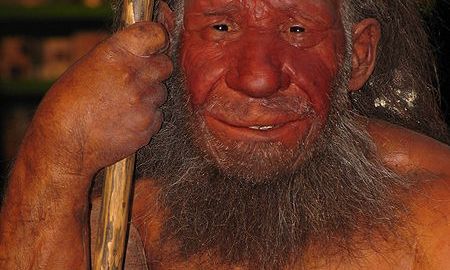Another Blow to the Idea That People Are All Alike

“Our thesis is that the sun people, the African family of warm communal hope, meets an antithesis, the vision of ice people, Europeans, colonizers, oppressors, the cold, rigid element in world history,” Leonard Jeffries Junior would tell his City College students. Ten years ago, when he was briefly famous for those ideas, that kind of “reverse racism” looked both foolish and scientifically wrong. Foolish, we said at the time, because the proclamation of black superiority clearly derives from older claims of white supremacy—this is imitation, not liberation. And scientifically wrong because all human beings are genetically alike.
Well, that was then. Racial supremacy still sounds foolish (you can’t cure white racism by turning it upside down). But the notion that human populations harbor significant differences? That has been gaining ground steadily over the past 20 years. And earlier this month a team of geneticists published this paper, (full text available here), which says that African populations really are distinct from other human groups. Genetically, modern people from Europe and Asia are more closely related to the original “ice people”—the Neandertals—than they are to modern Africans.
A number of news stories highlighted the evidence that Neandertals and anatomically modern people had interbred. But the paper is also a milestone in the erosion of the orthodoxy of my youth, which taught that all right-thinking people know that humans, everywhere, are genetically the same.
This had been laid down by the great geneticist Richard Lewontin of Harvard. In 1972, Lewontin published a paper showing that 85 percent of the variation in human DNA occurred within any given population. In other words, the differences between two members of the same population were inevitably greater than the differences between two people of different racial groups.
But “genetic variation” can be reckoned in different ways. In 2003, for example, A.W.F. Edwards attacked Lewontin’s method—counting up individual variants—saying it ignored the fact that variants cluster together. If you look at one site of variation in the genome, your chances of misclassifying a person ethnically are one in three. But if you look at ten places, your chances of a mistake are practically nil. Meanwhile genetic research keeps turning up evidence of meaningful distinctions among populations. Last week, for example, a team of Chinese and American geneticists announced that they had found genes which play a role in adapting Tibetan people’s physiology to thin, high-altitude air.
Does this mean we should start trying to figure out if “sun people” are better, or worse, than “ice people”? Not hardly. Genetics may make some people better at particular things—like breathing high-altitude air—but there’s a big difference between being better at one thing and being better at all things. Put a Tibetan in a swamp, his physiological advantage is gone. In fact, the question “which group is better?” is largely meaningless. The right question is “better at what?”
Still, the scientific debate is a useful reminder that the uniformity of all human beings is a moral stance. It doesn’t depend on genetic facts, nor should it, because it’s the nature of science to change and revise. If you don’t want your civil rights to be vulnerable to the next issue of Science, you have to decide, as a matter of principle, that you and your neighbor are equal members of the human community. Before and after you learn that some of his DNA came from the “ice people.”





